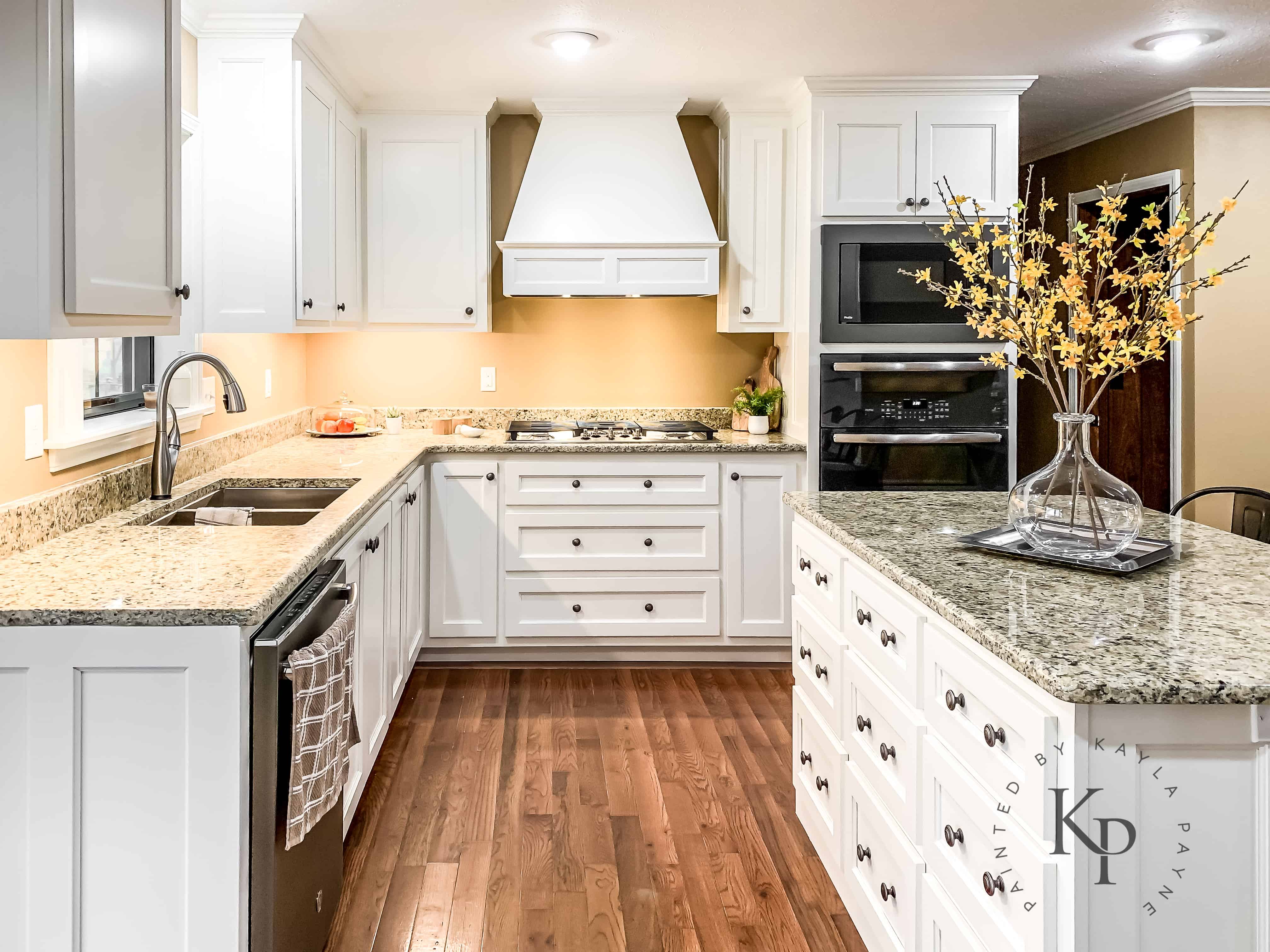The Painting Process

Painting black cabinets white requires a methodical approach to ensure a smooth, even, and durable finish. This process involves careful preparation, proper application of primer and paint, and appropriate drying times. By following these steps, you can achieve professional-looking results and transform your cabinets.
Preparing the Cabinets
Proper preparation is crucial for a successful paint job. This involves cleaning the cabinets, sanding, and applying a primer.
- Cleaning: Remove all hardware, such as handles, knobs, and hinges. Use a degreaser to clean the cabinets thoroughly, removing any grease, dirt, or grime. Wipe the surfaces with a clean, damp cloth to remove any residue.
- Sanding: Sand the cabinet surfaces with fine-grit sandpaper to create a smooth, even surface for the primer and paint to adhere to. This step helps to remove any imperfections or unevenness and ensures a consistent finish.
- Applying Primer: Apply a primer specifically designed for painting over dark surfaces. Primer helps to seal the existing color and creates a smooth base for the paint to adhere to. Use a brush, roller, or spray gun to apply a thin, even coat of primer, ensuring complete coverage. Allow the primer to dry completely according to the manufacturer’s instructions.
Applying Paint, How to paint black cabinets white
Once the primer has dried, you can begin applying the paint.
- Choosing Paint: Select a high-quality paint designed for cabinets. Consider using a paint with a satin or semi-gloss finish, as these provide a durable and easy-to-clean surface.
- Applying Paint: Use a brush, roller, or spray gun to apply the paint in thin, even coats. Avoid applying too much paint at once, as this can lead to drips and runs. Allow each coat to dry completely before applying the next. The number of coats needed will depend on the opacity of the paint and the desired coverage.
- Drying Time: Allow each coat of paint to dry completely before applying the next. Refer to the manufacturer’s instructions for the recommended drying time. It’s best to allow the paint to cure for at least 24 hours before using the cabinets.
Techniques for a Professional Finish
Achieving a professional finish requires attention to detail and the use of appropriate techniques.
- Using a Brush: A brush is ideal for painting intricate details and corners. Use a high-quality brush with soft bristles and apply the paint in thin, even strokes. Be sure to clean the brush thoroughly after each use to prevent the paint from drying and hardening.
- Using a Roller: A roller is efficient for covering large, flat surfaces. Use a roller with a nap length suitable for the surface you are painting. Apply the paint in smooth, even strokes, overlapping each stroke slightly to ensure complete coverage.
- Using a Spray Gun: A spray gun provides a smooth, even finish and can cover large areas quickly. However, it requires practice to master the technique. Ensure you are using a spray gun designed for the type of paint you are using. Apply the paint in thin, even coats, keeping the gun at a consistent distance from the surface.
Dealing with Drips, Runs, and Uneven Coverage
Even with careful application, drips, runs, and uneven coverage can occur.
- Drips and Runs: If drips or runs occur, allow the paint to dry slightly, then use a putty knife or scraper to carefully remove the excess paint. Once the paint is dry, sand the area smooth with fine-grit sandpaper.
- Uneven Coverage: If the coverage is uneven, apply another thin coat of paint. Allow the paint to dry completely before inspecting for any remaining imperfections.
Finishing Touches and Maintenance: How To Paint Black Cabinets White

Once the paint is dry, the final step is to seal and protect your newly painted cabinets. This step is essential to ensure the paint lasts and looks its best for years to come.
Applying a Sealant or Top Coat
A sealant or top coat provides a protective layer over the painted surface, making it more resistant to scratches, stains, and moisture. It also enhances the paint’s sheen and durability.
There are various types of sealants available, each with its own benefits:
- Polyurethane: Offers excellent durability, water resistance, and a high-gloss finish. It’s a good choice for high-traffic areas and kitchens.
- Acrylic: Provides good durability and water resistance, but with a less glossy finish than polyurethane. It’s a good option for bathrooms and areas with moderate traffic.
- Wax: Offers a softer finish and is less durable than polyurethane or acrylic. It’s a good choice for cabinets with a more traditional or antique look.
Applying a sealant is a simple process:
- Clean the cabinets thoroughly with a damp cloth to remove dust and debris.
- Apply the sealant evenly with a brush or roller, working in thin coats.
- Allow the sealant to dry completely according to the manufacturer’s instructions.
- Apply a second coat for added protection, if desired.
Cleaning and Maintaining Painted Cabinets
Regular cleaning is crucial to keep painted cabinets looking their best.
- Use a mild detergent and a soft cloth to clean the cabinets.
- Avoid harsh chemicals or abrasive cleaners, as these can damage the paint.
- Dry the cabinets thoroughly after cleaning to prevent water spots.
- Apply a sealant every few years to maintain the paint’s protection.
Addressing Common Issues
Even with proper care, scratches or chips can occur on painted cabinets.
- For minor scratches, use a touch-up pen or marker that matches the paint color.
- For deeper scratches or chips, sand the area lightly with fine-grit sandpaper, apply a coat of primer, and then repaint the affected area with the original paint color.
- If the damage is extensive, it may be necessary to repaint the entire cabinet.
